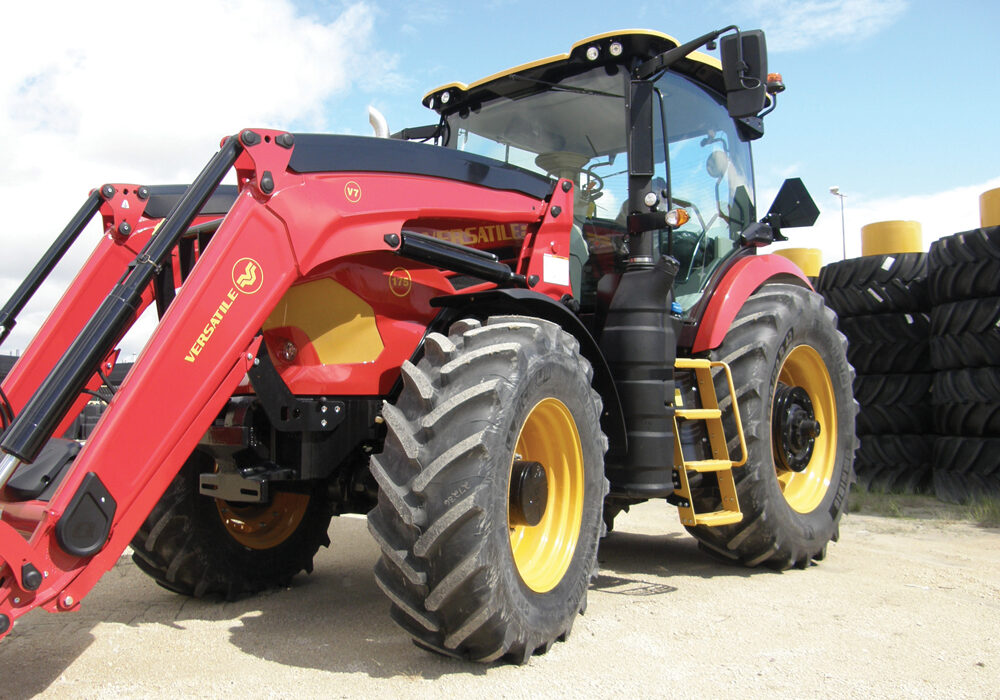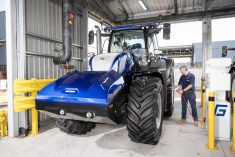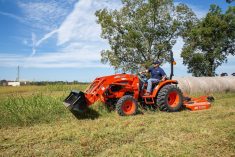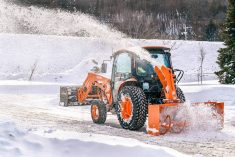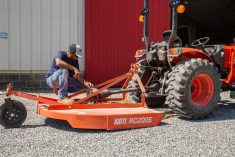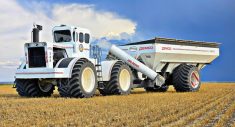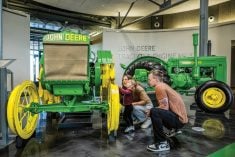Last year, in the pages of Grainews, we informed you about the 2019 launch of Versatile’s new Nemesis tractor line, which are also built as the Kubota M8s. And you probably saw similar announcements of the tractors’ introductions in other publications, but what no one else has done is given you a behind-the-scenes look at just exactly how that tractor line was developed and what goes into the process of coming up with an entirely new tractor. (Spoiler alert: it’s a time-consuming, expensive process.) In this three-part series, we’ll take a look at exactly what went into conceptualizing, building and launching the Nemesis/M8 tractors.
Read Also
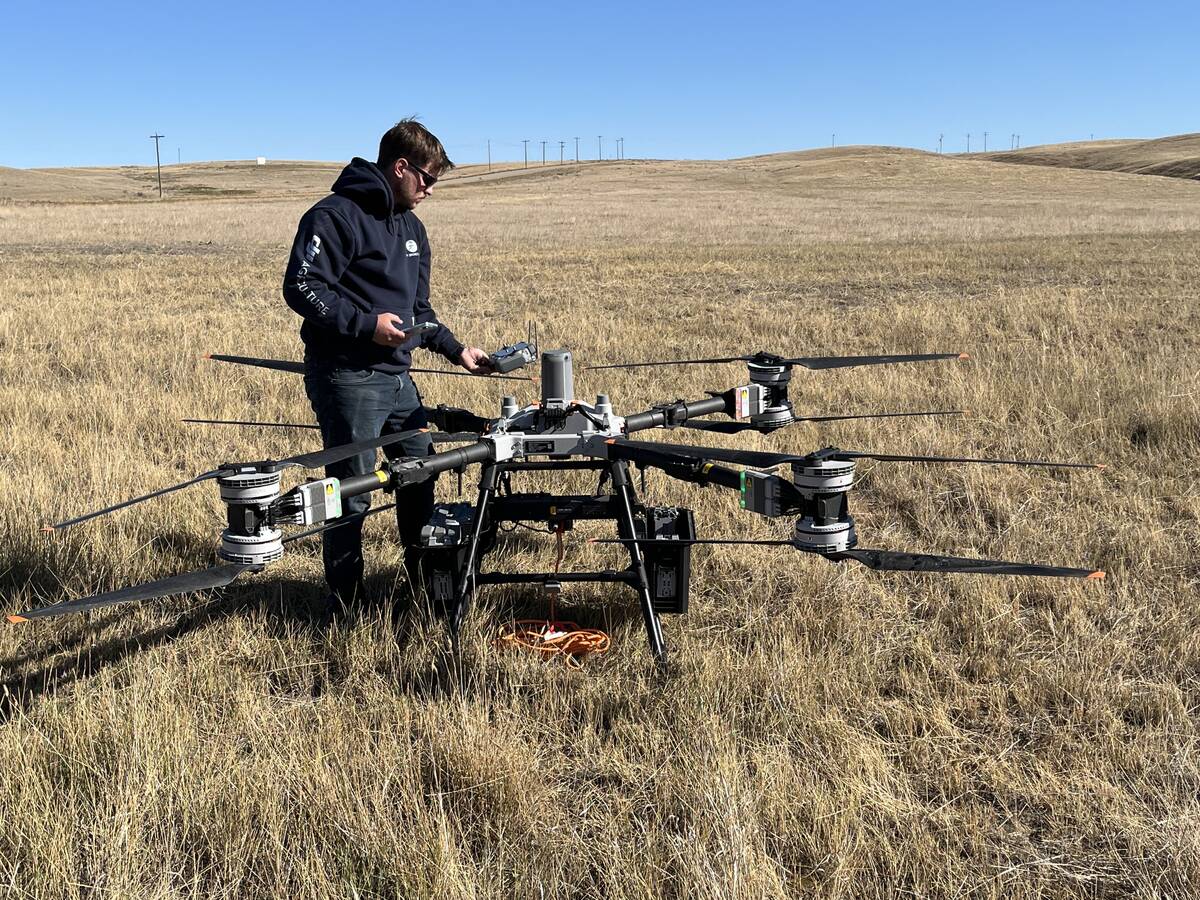
Farm-facing drone does the heavy lifting
Canadian distributor DJI Agriculture unveils its AGRAS T100 drone to western Canada’s producers for greater efficiencies in spraying and granular spreading in fields.
“This whole project was to be a range of tractors from 170 to 250 horsepower, that’s how it fit into the Versatile side,” says Grant Adolph, chief operating officer at Buhler Industries, the parent company of the Versatile brand. “Because of all of the options and different combinations, this is probably the largest investment Versatile has made on a tractor project.”
The initial launch from Versatile included three models, the 175, 195 and 210. Kubota has initially introduced two versions, the M8-181 and M8-201 (180 and 200 horsepower, respectively).
One of the really great things about being a machinery writer is occasionally a brand will give you a sneak peak at something they’re working on and trust you to keep quiet until the official announcement is made — a kind of embargo of sorts.
That is what happened to me several years ago when I happened to be inside the R&D shop at Versatile’s Clarence Avenue assembly plant and brand headquarters in Winnipeg, Man., working on another project. On the other side of the shop was an unusual-looking tractor. Executives there allowed me to walk over and take a closer look at it on the promise I’d keep what I saw confidential. And, of course, no picture taking was allowed.
That tractor, as it turns out, was an early test mule for what would become the Nemesis and M8 Series. In the early stage of tractor development, a test mule is used for evaluating how different components that an engineer’s computer says should play nicely together will actually perform. Not surprisingly, it looked a little different than the current production models as engineers fine tuned the design through the tractors’ evolution. Test mules are typically built with a blend of new components and existing, off-the-shelf parts to put together a working machine as the design progresses.
However, before any parts ever get bolted together on a mule, brand executives need to be sure there will be adequate market demand to drive sales, allow the company to recoup its investment and turn a profit. Versatile executives had to be sure there was a strong market demand before making the decision to begin the process, which took roughly six years before the tractors made their official debut.

Deciding what specifications to build into the new models is critical in giving it future market appeal.
“Starting in 2013, we had our first sit down where we started to lay out the models and what type of equipment we’d use this for,” says Adolph. “European tractors don’t really do well in North American row crop applications, but we knew this tractor would have opportunities there. We needed to be able to develop a tractor that could be used in row crop, obviously a tractor that would be used in feed lots, so it needed front-end loader capability, and also it would be used as a general purpose tractor. It could be used on a grain farm, or cutting and baling hay. That put a requirement that we had to have a front PTO and three-point hitch on this tractor. So, we started laying out this framework working with the engine manufacturer Cummins, looking at Tier IV Final engines.”
Although Adolph says the project was the most involved and expensive one Versatile had ever undertaken, he will only reveal that development costs were somewhere “in the millions.”
When Buhler Industries took ownership of the Winnipeg assembly plant from New Holland in 2000, the company continued building the four-wheel drive and Genesis tractors that had evolved from the original Versatile tractors. However, by then, both tractor lines were getting long in the tooth and needed updating.
The Genesis line had originally included models reaching down to the 170-horsepower mark, but their redesign under Buhler Industries ownership pushed their ratings higher, leaving a gap at the lower horsepower end of the scale where Versatile now no longer had a presence.
“Our dealers were asking for something to fill this void,” Adolph explains. “Then we started looking at how do we expand the line, filling in at the low end of the Genesis, or the Range 2 as we called it internally. That’s where (the Nemesis project) started.”
And the Nemesis range lands in a market segment that enjoys much higher overall sales volumes than the high and very-high horsepower models Versatile had limited itself to since the takeover from New Holland. So, if dipping back down into the tractor market below 200 horsepower means potentially selling higher volumes, why not go all the way down into the utility tractor segment, where overall sales volumes are higher still? How was the decision made where to stop on the horsepower scale?
“(Picking the low end) was definitely a combination effort (of engineering and marketing), of where can we get this component and then looking at where most of the tractors are built,” explains Adolph.
“Going down in horsepower, then the tractors aren’t built in Europe anymore. Then you’re looking into Asia, whether it’s Japan or Korea. When you get down under 150 or 160 horsepower, then there are many more players. There are still a few built in Europe, but there are more and more coming from Asia. We made the conscious decision, we’re a Canadian company and could probably not be competitive in the marketplace going that low in horsepower. So, it was partially trying to find where we can still be competitive.”
With the horsepower range and needed capabilities decided on, the next step for Versatile was to have engineers turn the concept into working tractors. In the next issue, we’ll continue the behind-the-scenes view at the Nemesis/M8 development with a look at the actual engineering that went into creating the tractors.


